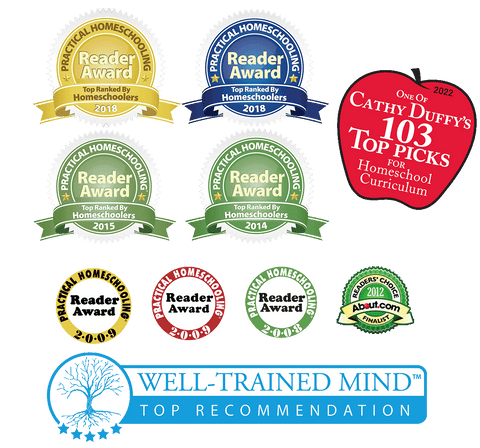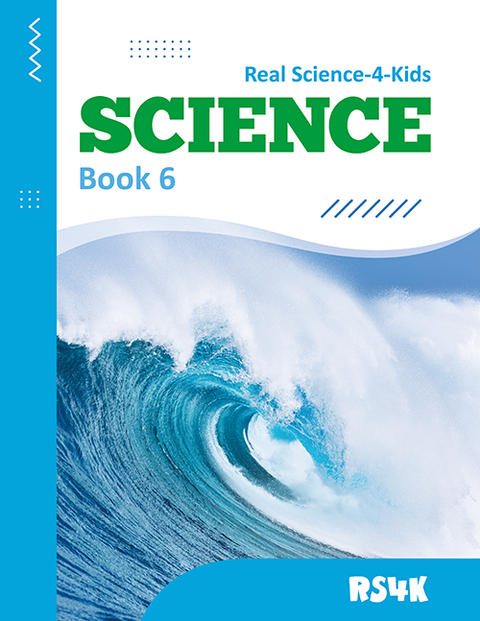
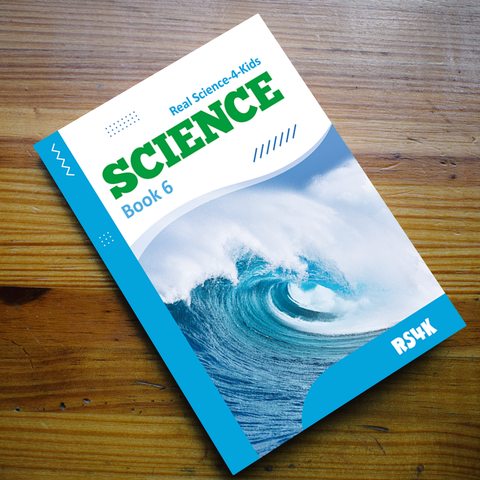

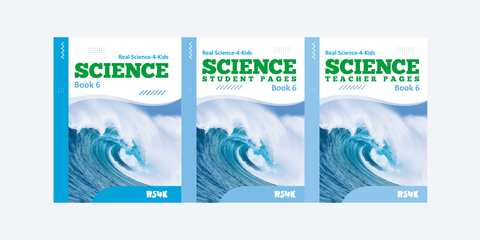
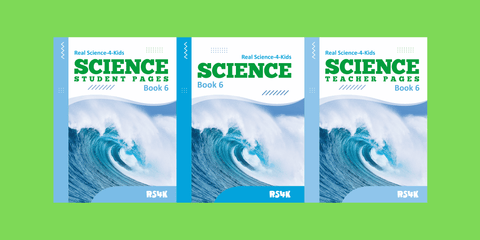
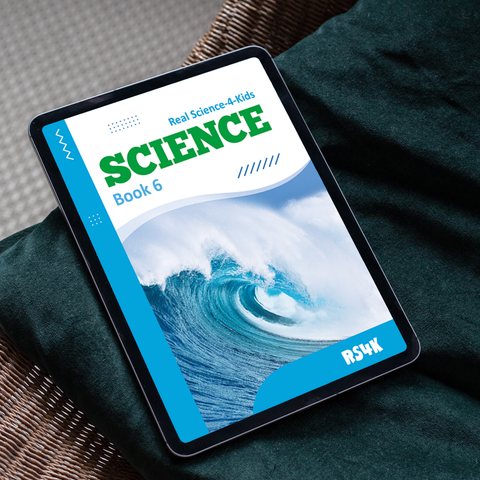
Science Book 6
Science Book 6
Real Science-4-Kids Science Book 6 brings modern science to life, showing students how tools, data, and technology drive discovery. This volume emphasizes how scientists use microscopes, satellites, telescopes, and lab instruments to investigate systems, gather evidence, and solve real-world problems. By combining rigorous content with hands-on exploration, students begin to see science not just as knowledge—but as a collaborative process of discovery.
Open and Go - 3 book set
(Textbook, Student Pages, Teacher Pages)
What’s Inside the Set
-
Hardcover Student Textbook — Full-color, richly illustrated, and vocabulary-driven, guiding students through increasingly advanced concepts with clarity.
-
Softcover Student Pages — Study notebooks, RATATAZ experiment sheets, and quizzes that encourage students to observe, measure, and analyze like working scientists.
-
Softcover Teacher Pages — Lesson plans, pacing guides, experiment instructions, answer keys, and grading rubrics—making it easy to teach middle school science with confidence.
Why Families, Co-Ops, and Teachers choose Book 6
-
Tools of Science — Students learn how instruments and technology—from microscopes to satellites—shape modern research.
-
Integrated Learning — Chemistry, biology, physics, geology, and astronomy topics interconnect through real-world systems.
-
Critical Thinking — Emphasizes interpreting data, modeling, and collaboration—helping students grow into independent scientific thinkers.
-
Future-Oriented — Prepares learners not only for advanced high school science but also for understanding their place in a global scientific community.
Covered in 22 Chapters
-
Chemistry — Lab instruments, acids and bases, titration curves, and nutritional chemistry.
-
Biology — Microscopes, protists, fungi, and modern biological research.
-
Physics — Inertia, momentum, speed, velocity, curved motion, and computational modeling.
-
Geology — Earth’s spheres, volcanoes, earthquakes, and the greenhouse effect.
-
Astronomy — Telescopes, celestial clocks, habitability, and the search for life in other systems.
Available Formats
-
Textbook — Hardcover print or Digital Flipbook (lifetime access).
-
Student Pages — Softcover print with perforated, tear-out notebook and cut-out activities, or downloadable PDF.
-
Teacher Pages — Print edition or digital PDF with lesson plans, answer keys, and grading rubrics for structured evaluation.
With its emphasis on modern tools, collaboration, and cross-disciplinary thinking, Science Book 6 helps learners bridge knowledge and application. Students see how science shapes everyday life and global discovery—while strengthening the mindset of real scientists.
Reading Level: Grade 7+ for independent work
Concept Level: Grade 6+ with parent/teacher support
Learn more about the grade levels and placement for the Science series. https://rs4k.com/pages/faq

